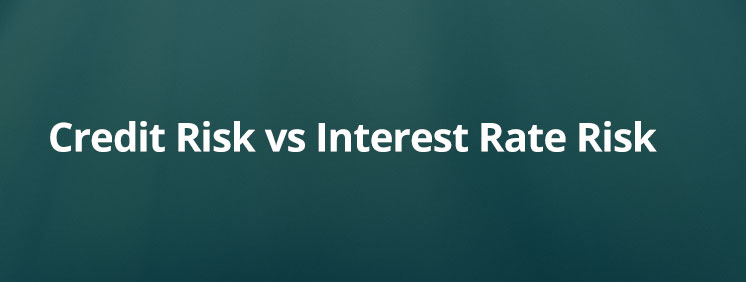
As a general rule, bonds are considered a lower risk investment. While bonds do typically have less risk than many other financial products, that does not mean they are without any risk. If you choose to invest in bonds, it’s important to understand their unique risks before investing in them. The two main risks for those investing in bonds are credit risk and interest rate risk. Here’s what you need to know about each.
Characteristics of a Bond
Understanding the risks associated with bonds requires an understanding of some of the basic characteristics of bonds. A bond is a loan for a large entity, such as a corporation or the government. When this entity wants to raise capital, it can do so by issuing a bond. Investors then give the entity money and in return, the issuing entity pays interest on the loan. The interest rate on the loan is known as the yield. The issuing entity agrees to pay back the principal of the loan by a certain date, which is known as maturity, plus any interest on the loan.
Credit Risk
One of the two major risks for bond investors is credit risk. Credit risk is the chance that the issuing entity will default on the loan. This occurs if the underlying entity goes bankrupt. If this occurs, bond investors may receive little or even none of their principal investment.
While credit risk is certainly a concern, it is worth noting that the risk is less than it is for stocks. That’s because if a company files for bankruptcy when it sells its assets it must first pay back the bondholders. Only once bondholders have been repaid can shareholders receive anything.
Bond investors are therefore less likely to lose their money if a company goes bankrupt than shareholders are. This is part of the reason why bonds are considered a less risky investment than stocks.
Interest Rate Risk
Interest rate risk is a bond’s susceptibility to interest rates. Bonds are traded on a secondary market and can be traded either above or below their nominal value, which is the face value of the bond. This means bond prices can rise and fall similarly to stocks.
One of the major factors of the rising and falling bond prices is interest rates. Bonds have an inverse correlation to interest rates. When interest rates increase, bond prices decrease, and vice versa. When you invest in bonds, there is therefore the risk of interest rates increasing and the value of your bonds decreasing.
Credit and Interest Rate Risk in Different Types of Bonds
There are many different types of bonds and each of them is impacted by varying levels of credit risk and interest rate risk. For those looking to invest in bonds, understanding the nature and degree of risk in each type of bond can help make more informed financial decisions.
Higher Credit Risk Investments
The bonds with higher levels of credit risk are high yield bonds, also known as junk bonds. As the name implies, high yield bonds often have higher yields. This allows investors to see higher returns. The flip side to this higher potential for return is the higher level of risk since the companies issuing these bonds have a higher chance of defaulting on their bonds. High yield bonds have some of the highest levels of risk of all bonds, but they also have some of the highest returns.
Higher Interest Rate Risk Investments
U.S. treasuries and mortgage-backed securities (MBSs) are two investment options with higher levels of interest rate risk. U.S. Treasuries are bonds issued by the U.S. government and MBSs are bonds that use mortgages as collateral. While these bonds may have more interest rate risk, they also have some of the lowest credit risks. U.S. Treasuries are backed by the U.S. government and are therefore considered one of the safest investment options.
Investments with Both Credit and Interest Rate Risk
Some bonds have a moderate amount of both credit risk and interest rate risk. Corporate bonds most often fall within this category. Susceptibility to two types of risk may cause corporate bonds to sound less appealing, but that does not mean corporate bonds are riskier overall. Corporate bonds have less credit risk than high yield bonds and less interest rate risk than U.S. Treasuries and MBSs, making them a great middle of the road option.
The Takeaway
Investing in bonds comes with risk. Those interested in the bond market should take the time to learn about the different types of risk and how they impact each type of bond.
About The New York Institute of Finance
The New York Institute of Finance (NYIF) is a global leader in professional training for financial services and related industries. NYIF courses cover everything from investment banking, asset pricing, insurance and market structure to financial modeling, treasury operations, and accounting. The New York Institute of Finance has a faculty of industry leaders and offers a range of program delivery options, including self-study, online courses, and in-person classes. Founded by the New York Stock Exchange in 1922, NYIF has trained over 250,000 professionals online and in-class, in over 120 countries.
See all of NYIF’s training and qualifications here.





